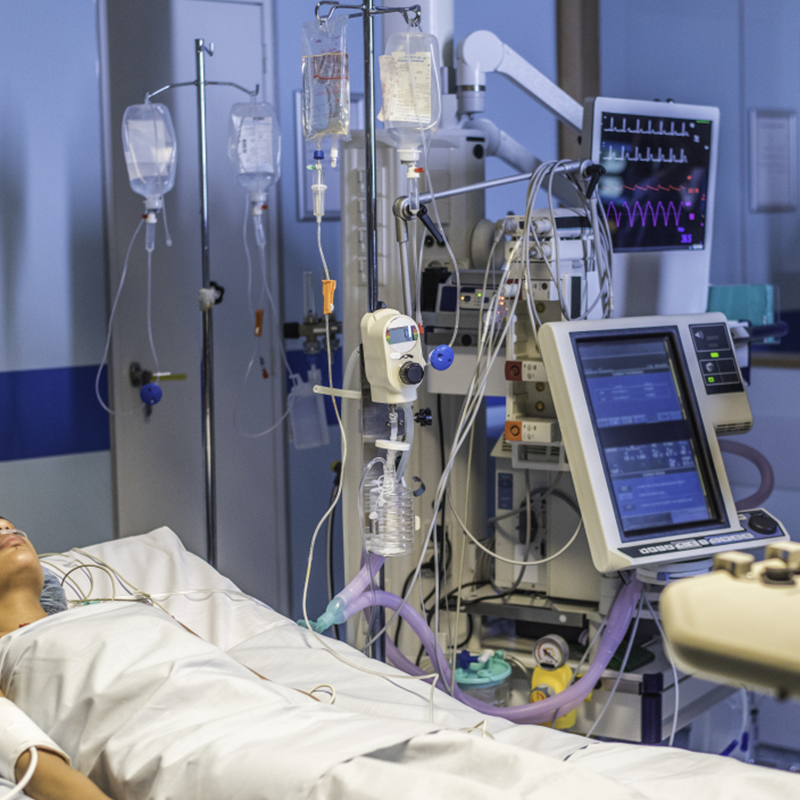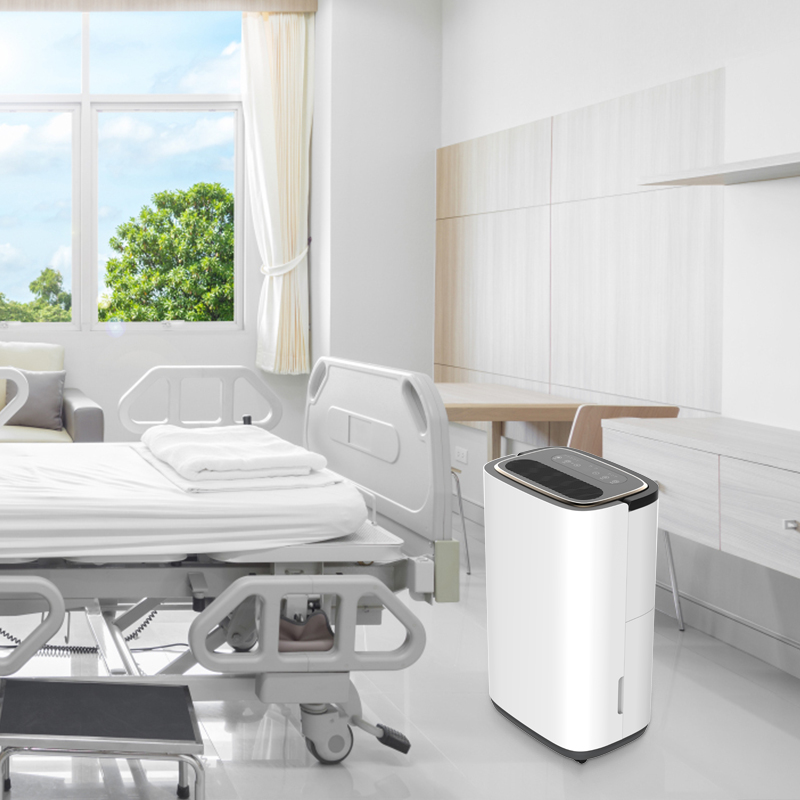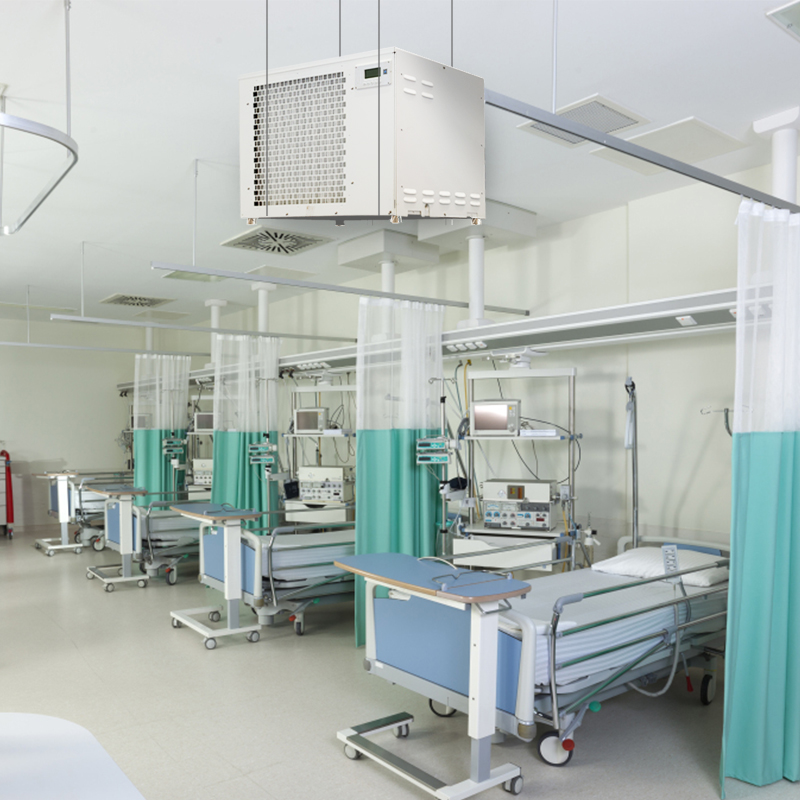The ICU (intensive care unit) is an independent department that focuses on the treatment of critically ill patients and provides timely, comprehensive, systematic, and continuous monitoring and treatment for critically ill patients.
ICU is the gathering place of critically ill patients in the hospital. The hospital will provide the best guarantee in terms of manpower, material resources, and technology in order to obtain good treatment results for patients. Therefore, ICU is an important department reflecting the comprehensive treatment level of the hospital. Each country will have relevant "Guidelines for the Construction and Management of Intensive Care Department" to guide the ICU construction of hospitals at all levels. Hospitals tend to pay attention to the building area, temperature, ventilation, and lighting of wards when building intensive care units, but tend to ignore the humidity requirements of wards. Humidity is also an important indicator of human comfort. Keeping humidity within a reasonable range will help to create a comfortable environment for medical staff and patients.
1. Influence of humidity on medical staff
Under certain temperature conditions, the lower the relative humidity of the air, the faster the sweat evaporates, and the cooler and more comfortable the body feels. If the relative humidity is too low, people tend to have dry lips, bleeding from nostrils, and an itchy throat. If the relative humidity is too high, it will inhibit the heat dissipation of the human body and make people sultry and irritable.
The number of personnel in the ICU is more than that in ordinary wards. Due to limited conditions and poor ventilation, the medical staff in ICU will be more sensitive to air humidity. A healthy and comfortable environment is a prerequisite to ensure that medical staff can better treat and care for critically ill patients.

2. Influence of humidity on air quality
Biological pollutants such as fungi, pathogenic bacteria and viruses mainly enter the human body through the respiratory system, affecting health. Some pathogenic microorganisms can even reproduce in the air and spread to the surrounding environment, causing disease outbreaks.
Relative humidity has an important impact on the existence and reproduction of biological pollutants. When the relative humidity is less than 50% and the temperature is 20 ℃, it is conducive to the growth of mold and bacteria. The appropriate relative humidity for mold propagation is 75%~95%. The higher the relative humidity, the higher the reproduction rate of mold.
Relevant experiments show that controlling humidity below 60% can effectively control the growth of most microorganisms.
3. Influence of inappropriate RH on critically ill patients
Patients in ICU are generally seriously ill, with unstable vital signs and much worse resistance than normal people. The high relative humidity of the air will breed bacteria and other microorganisms, which may aggravate the patient's condition. When the relative humidity is too low, that is, in a dry air environment, it will cause the secretion of the mucous membrane of patients to decrease, blood volume to slow down, and body antibody content to decrease, which is easy to cause peptic ulcer. For those severe patients with brain edema, a low humidity environment can easily induce conjunctival edema. Too low humidity will also dry the cornea, cause corneal ulcers, and even cause blindness.

4. Impact of high RH on medical equipment
ICU was born with the progress of science and technology. During the treatment of severe patients, it is inseparable from all kinds of sophisticated medical equipment. The high-humidity environment will harm the normal operation of high-precision equipment. First, the moisture in the air attached to the surface of the insulation material of the equipment will reduce the insulation resistance of the equipment. With the increase of the leakage and current of the equipment, it may cause insulation breakdown. Second, moist air is conducive to the growth of mold. During metabolism, mold will secrete acidic substances, which will produce a dark film between conductive connectors, resulting in increased contact resistance, and in serious cases, reduce equipment accuracy. Third, some metals in the equipment will fail due to corrosion in a high humidity environment.
5. Installing dehumidification equipment during the construction of ICU
It will cause a passive situation to consider the humidity problem after the construction of the ICU. At this time, if the dehumidifier is placed in the ward, noise will be generated when the machine works, affecting the nearby patients.
Therefore, Preair suggests that humidity control and temperature control should be considered during the construction or reconstruction of the ICU, which is beneficial to the management and maintenance of the department during operation. Preair is a company specializing in the production of dehumidifiers. We can manufacture different types of dehumidifiers with different dehumidification capacities and performances according to customer requirements. Our dehumidifier has obtained the certificate of American Energy Star, which proves that our products are energy-saving, efficient, and environmentally friendly. There are commercial dehumidifiers, industrial dehumidifiers, and home dehumidifiers for sale. Welcome to consult.
Health Tips for COVID-19 Patients
COVID-19 patients with severe high-risk factors and rapid disease progression should be treated in a standard prone position. Generally speaking, the prone position is prone. As a means of lung protection strategy, prone position ventilation is widely used in ICU. Its main principle is to effectively improve the proportion of ventilation blood flow, make the dorsal collapsed alveolar re-expansion, make the lung and tracheal secretions well drained under the action of gravity, and reduce the compression of the heart and mediastinum on the pendulous lung area. Finally, it can improve hypoxemia, hypercapnia, lung responsibility, and hemodynamics. Early implementation can prevent the progression from mild to severe and critical, and improve the clinical prognosis of severe and critical patients. Ordinary, severe, and critically ill patients with severe high-risk factors and rapid progress should be given standard prone position treatment, and it is recommended that they should not be less than 12 hours a day.
For patients in ICU, prone-position ventilation has great benefits. However, because they establish artificial airways, use ventilators, use analgesics, and sedatives, and are covered with monitoring and treatment pipelines, the prone position ventilation cannot be completed by themselves. Generally, a respiratory specialist, an ICU doctor, a rehabilitation doctor, a bedside nurse, and one or two auxiliary staff are needed to help the patient to ventilate in the prone position.
Post time: Jan-10-2023
 +86-13376814803
+86-13376814803  robert@hzhongtai.com
robert@hzhongtai.com 













